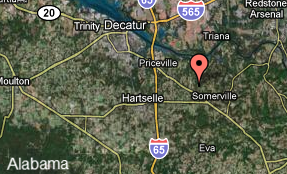Highest Accuracy – How Do You Get It?

We’re often asked if ScanLook can compete with terrestrial laser scanning in regards to accuracy. Similarly we’re asked just how accurate it can get and how is this possible. Below we make an attempt to give an explanation of the technology and what can be achieved with it. Like so many other things, good people, good procedures, and a good day make a big difference in the end result.
The weakest component in any system is the one that doesn’t deliver. In a Mobile Mapping System (MMS) we have several key components but perhaps the two most important are the INS and the scanner(s). In this analysis we want to compare the expected relative and absolute accuracy of a MMS with a TLS (Terrestrial Laser Scanner).
ScanLook uses the FARO FOCUS 3D laser scanner for high definition, hard surface, high accuracy scanning. This scanner is rated as a 0.5 to 2.0 mm scanner. Through repeated tests it has been shown it is roughly a 1 mm scanner. Using the F3D in a static process on a tripod we can expect results similar to other scanners of equivalent quality. Basically 5 to 6 mm is a realistic expectation for a network scanned with the F3D. These results are all relative as we have not introduced any control points. If we introduce control points we would have to compute a full error propagation for the system. Let’s do something simple. Let’s assume the control is PERFECT or less than 1mm in absolute accuracy. Basically that leaves the TLS solution at 5 to 6 mm in relative and absolute accuracy. Of course, we know the control is not perfect but we’ll assume it is.
Moving along, the question is whether or not this same sort of result can be achieved from a mobile platform. Instead of being held on a solidly fixed tripod absolutely free from any disturbances along our survey (doubtful this can happen along a rail line) our MMS is moving on a relatively smooth surface. There will be some abrupt changes during the travel in spite of this. The scanner is scanning in a 2D plane collecting points radially outward along the line of travel (BTW, this is a big advantage of the MMS such that the highest density of points is always nearest to the line of travel and consequent area of interest).
We need to address what the IMU does. The IMU measures two things: orientation (i.e. angles, attitude, or rotational position relative to the inertial coordinate system) and acceleration. The gyros measure the orientation and the accelerometers measure the inertial acceleration or G–forces. What is of key importance here is what can be expected to our "near perfect" laser recording along our path. The NovAtel ISA–100C can maintain 3mm accuracy at 25 meters. This is just slightly over what can be expected from the scanner. This establishes that the relative accuracy of the points in any particular scanline remain within just a few millimeters.
Now we need to address what happens along the line of travel. The heading accuracy degrades roughly by 2.5 times that of the roll and pitch. This equates to less than a centimeter over the same 25 meter distance. However, the heading and the GPS trajectory work in tandem. This is very important in the post–processing step. All of this, combined with the acceleration readings, generate the pathway of the trajectory. Basically this is good to around 1 to 2 cm assuming good GPS signal. Most important is that the IMU can monitor and account for small and very rapid changes by working at 200Hz. It is highly unlikely that a ground–based vehicle (outside of a helicopter sitting on the ground) could vibrate too fast for the IMU to accurately account for it.
At this point we are primary limited to our along track errors of 1 to 2 cm. Our experience has shown that we can map an open interstate with good GPS coverage at the +/– 1cm level in repeated test. Now we need to improve our results to 5 to 6 mm. This is where control points and good software become very important. The point cloud at this point is not dissimilar to old style photogrammetric data. In this case, we would employ control points with our point cloud data and use an appropriate math model to tie the observations to the ground (in photogrammetry we would have used a strip or block adjustment program such as PAT–M, SPACE–M, or ATP). By measuring corresponding points in the point cloud and adjusting them to the "perfect" control with a sufficient point density, we can adjust the point cloud to meet our specs. The key here is to have a sufficiently dense pattern of control points to support the accuracy needed.
How dense is dense enough? This depends upon the accuracy required. It may require control every 100, 250, or 500 feet. Please refer to this article for an independent study for control point dispersion and accuracy results.
In many cases involving static scanning each setup is dependent upon local control (i.e. control within range of that single scan). Many variables come in to play to answer this question and there is no single answer. GPS coverage and blockage play a very big part of this and it varies constantly. In any case, it remains far faster to set a few control points to control the mobile scan data than it does to collect what might be literally hundreds of features in the same area using conventional methods or even static scanning.
The bottom line is that ScanLook can match the accuracy of a terrestrial scanner, at least that of the FARO FOCUS 3D. To do this does require a sufficient number of control points, the proper registration software, good GPS, the top end IMU, good procedures, good people and a good day.
For typical accuracies, click here...




